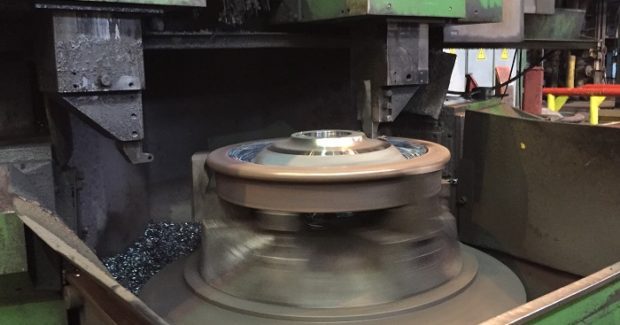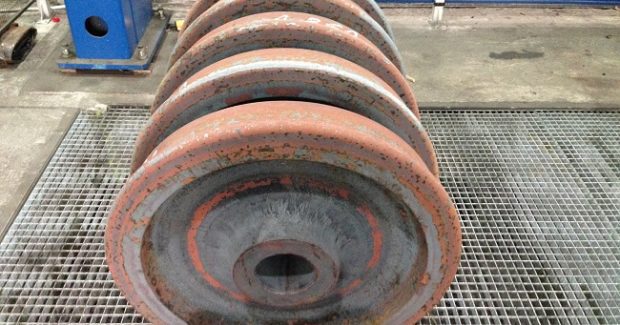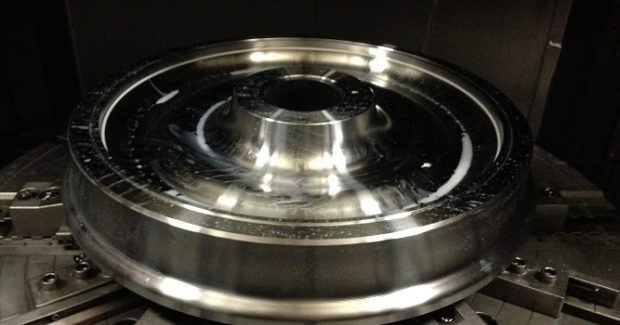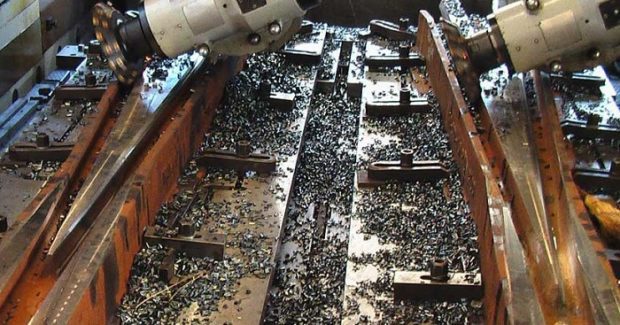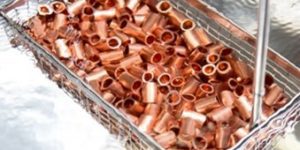Keeping Railroads on Track
As increasing demand for passenger and freight rail services fuels rapid growth in rail infrastructure investment, machining plays an invaluable role in the maintenance, repair and manufacture of numerous railway applications, including track, wheels and wagon parts.
Posted: July 3, 2018
With a year-on-year increase of 2.6 percent, the railway industry is enjoying sustainable growth and is expected to be worth more than $200 billion by 2020 as increasing demand for passenger and freight rail services fuels rapid growth in infrastructure investment around the world. A critical component of this growth is the machining that provides an invaluable role in the maintenance, repair and manufacture of numerous railway system applications, including track, wheels and wagon parts. For example, one important element in any rail infrastructure is the machining of rail switches and crossings, the moveable sections that guide trains from one track to another. They have a limited lifespan that varies depending on numerous conditions, such as level of usage and surrounding environment.
A railroad switch created from new material, for example, has a standard guarantee of five years. If the switch is made from an applied material or has gone through a process of regeneration or necessary treatment (rubbing down, parts exchange etc.), its guarantee time is lowered to two years. To ensure reliability and safety of the switches, they must be updated regularly to remain fully operational, which is a huge undertaking. Take the Czech Republic for instance, which has one of the most extensive rail networks in Europe with 5,600 miles of track and more than 25,000 switches. In the town of Šumperk where our indexable production facility is located, the local team works with many leading manufacturers to develop standard and custom tools for the production of new railway switches and the renovation of existing ones.
Tools for other switch parts (such as sliding chairs and switch rods) offer several advantages, including durability, insert edge stability, shape precision and a rigid solution, and the Pramet railway assortment encompasses train and tram switches for all major rail profiles: their 60E1 and 60E2 rail profiles are the most common in Europe, and the type T section rail (flat bottom rails) is suitable for medium and heavy load traffic.
Another important element in rail infrastructure is new wheel set machining, where most parts are manufactured from forged pieces. The production of new wheels, particularly the roughing and finishing operations, can be completed with standard Pramet RCMX inserts. Numerous sizes, grades and chip breakers provide options for every workpiece material and cutting condition. Along with machining new wheels, there is a continuous need for wheel reprofiling through a wide assortment of machining centers from various manufacturers. Pramet holders are suitable for some of the leading machine tools, including systems from Hegenscheidt-MFD GmbH (Erkelenz, Germany) and Rafamet SA (Kuźnia Raciborska, Poland). Since 1950, Hegenscheidt has installed more than 2,000 wheel set reprofiling machines around the world.
Both of these machine tool builders use special purpose wheel lathes for railways, metro, tram, and other light-rail transit systems, along with heavy duty single and double-column vertical turning lathes, large bridge-type milling machines, horizontal lathes and special machines. Over time, cooperation with these and other machine producers and rail repair services has enabled our company to develop a wide range of standard and custom systems for increasing productivity and reducing costs that are typically associated with these processes. This means the renovation of railway and tramway wheels can be achieved with a standard assortment of inserts (LNMX, SNMX, CNMX), grades and chip breakers. A range of cartridges with pocket protection is also offered, allowing a comprehensive and versatile system for depth of cuts between 1.0 mm to 16.0 mm.
One company in Ukraine, for example, required support with the re-profiling of railway wheels made of steel with a high hardness of 450 HB to 615 HB. An LNMX30 insert with RF chip breaker and T9315 grade achieved a high level of durability and was significantly more productive than an equivalent supplier, machining 12 wheels compared to the competitor’s five. Another success involved a specific machine builder for wheel set reprofiling in Poland. The shop wanted to resolve a chip breaking issue when machining hardened steel 800 mpa to 900 mpa. An LNMX30 insert was used again, this time with a TF chip breaker and T5315 grade. This combination achieved 50 per cent longer tool life compared to competitors, and also significantly improved chip breaking on the perpendicular surface.
The T5315 grade is a versatile option designed for turning grey and ductile cast iron, as well as various steels, including hardened steel. It is suitable for roughing and finishing with medium to high cutting speeds and capable of both continuous and interrupted cut. This makes it a very versatile option in challenging machining conditions.

